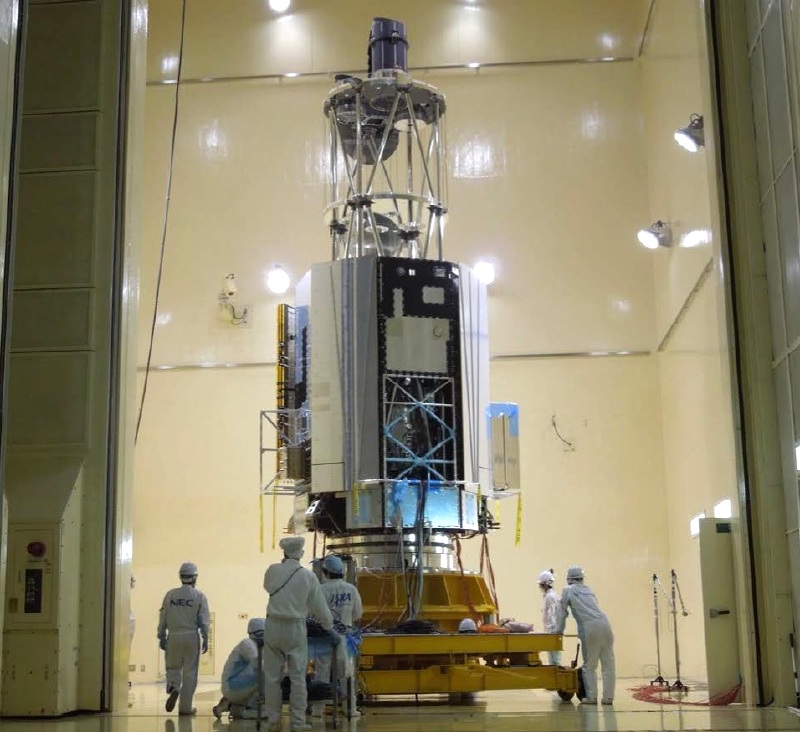
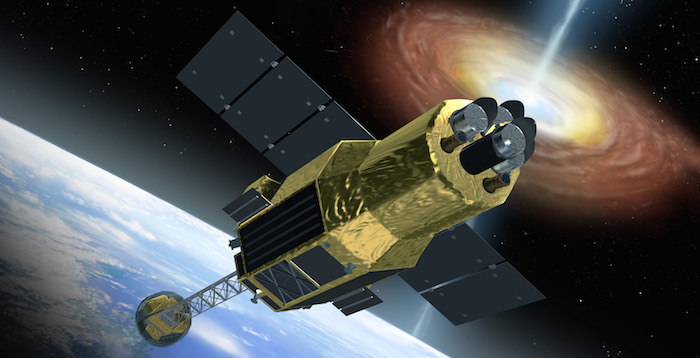
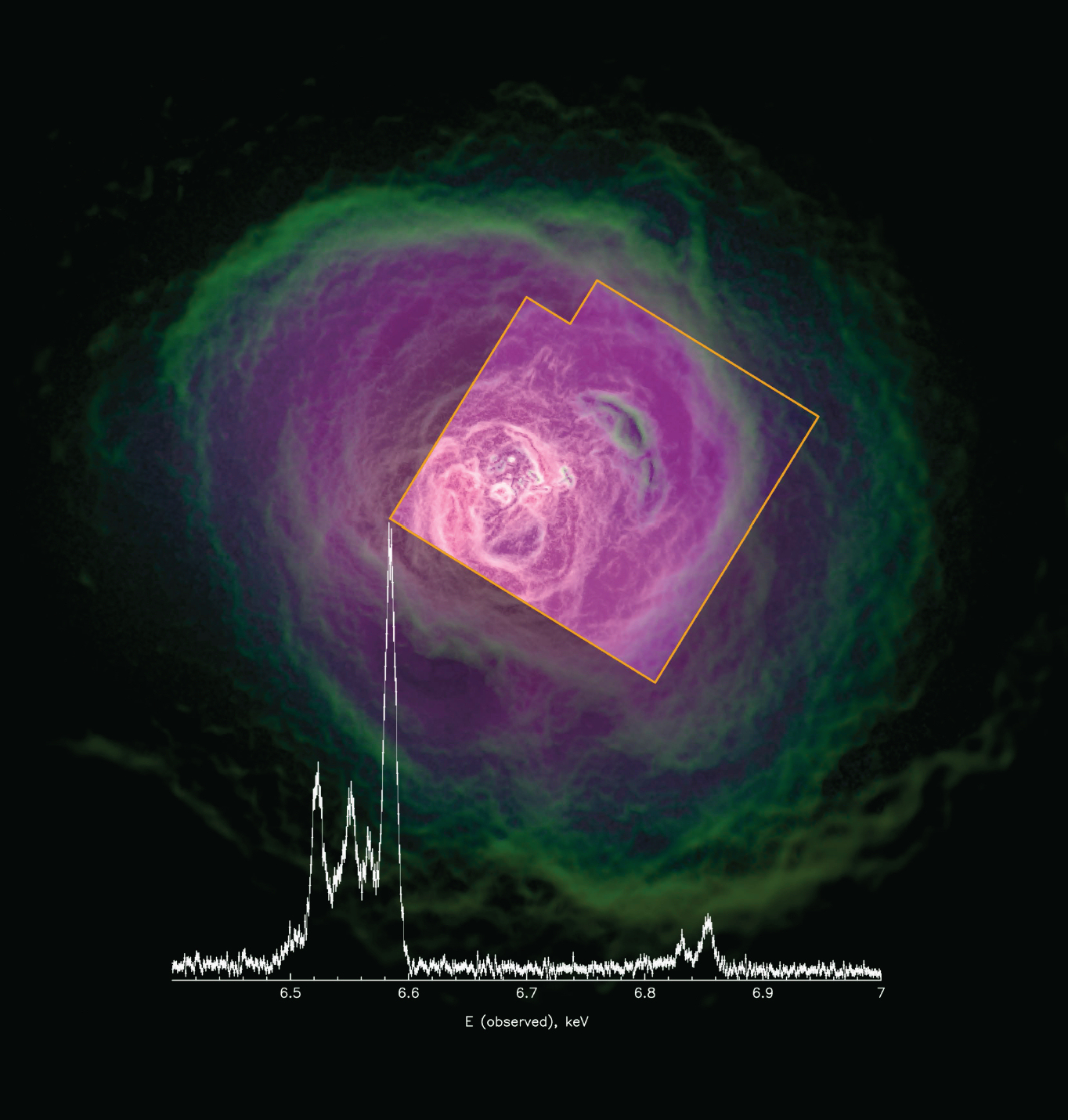
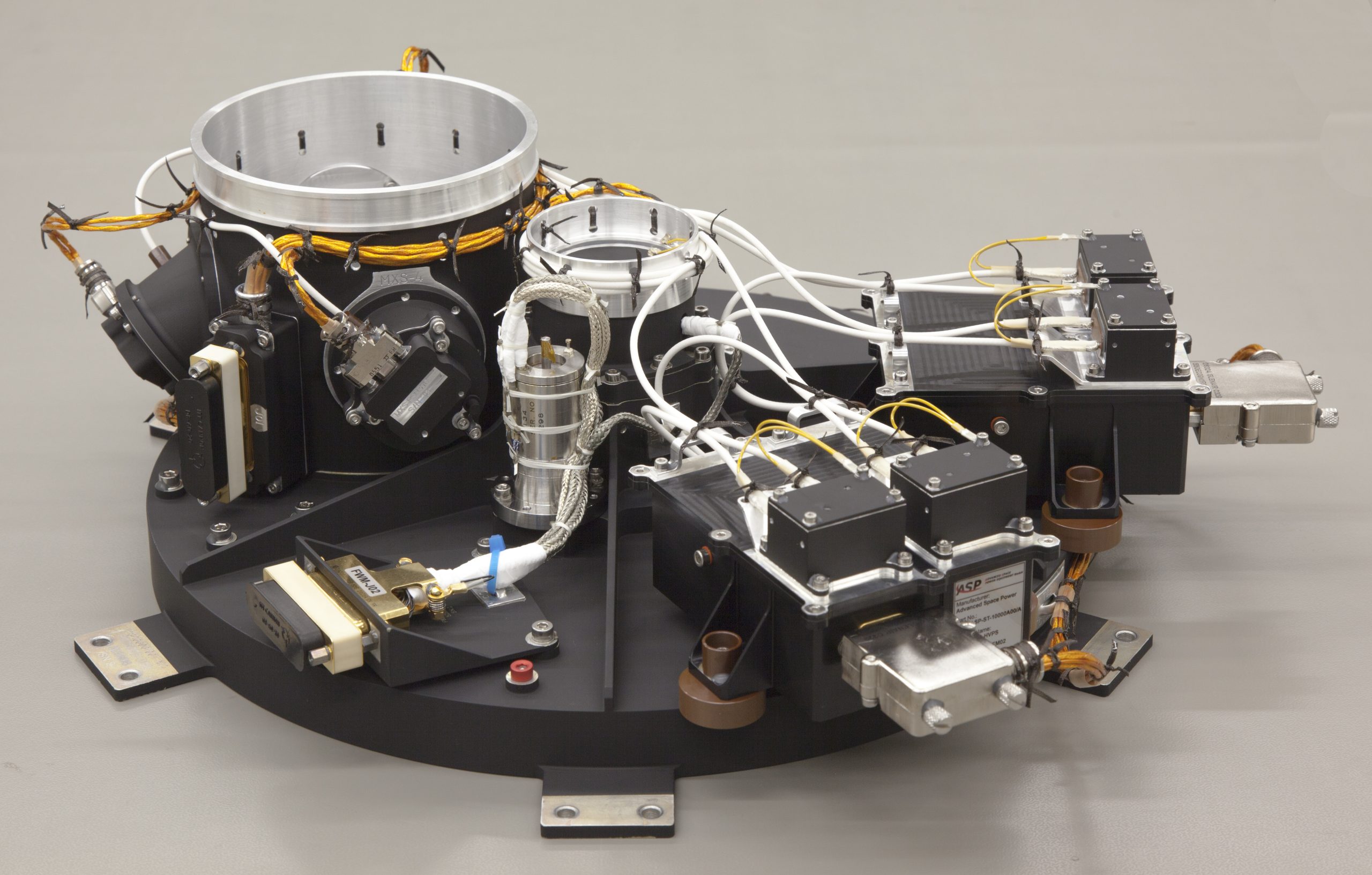
is in the central part. The two rectangular boxes contain the High Voltage Power Supply Units (12 kV) and
the small cylindrical structure at the top right is the ring supporting the 4 calibration sources
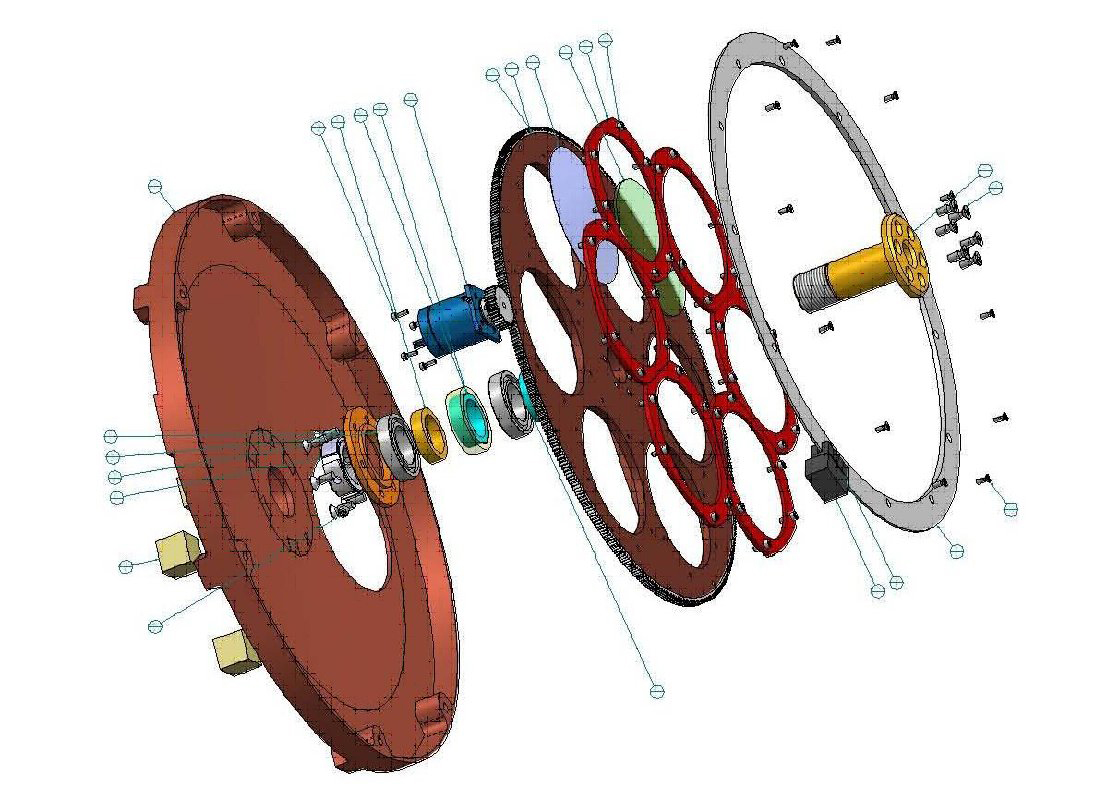
Hitomi (formerly called ASTRO-H) was a high-energy astrophysics space telescope, developed by the Japan Aerospace Exploration Agency (JAXA) in collaboration with institutions in Japan, the US, Canada and Europe. After a perfect launch on 17 February 2016 and a few weeks of excellent operations, Hitomi was considered to be lost by the end of April 2016.
Hitomi was equipped with a Soft X-ray Spectrometer (SXS), built by JAXA/ISAS in collaboration with NASA/GSFC and with contributions from Europe. The SXS spectrometer was the first instrument to simultaneously provide maps and spectra of clusters of galaxies and the remnants of supernovae. It achieved a spectral resolution of less than 7 eV at energies between 0.3 and 12 keV.
SRON provided the filter wheel for SXS, together with the University of Geneva, and an onboard calibration source in collaboration with Photonis Netherlands . In addition, SRON contributed to the system design, calibrations, and astronomical data analysis.
Recovery mission
In June 2017, ESA decided to contribute to the Japanese/American satellite XRISM (X-ray Imaging and Spectroscopy Mission). This mission—scheduled for launch in 2021—will compensate the loss of Hitomi. Just like Hitomi, XRISM will make X-ray observations with an energy resolution of less than 7 eV in the 0.3-12 keV bandpass. The ESA contribution to XRISM also means green light for a contribution from SRON and the University of Geneva. This will once again consist of a filter wheel with X-ray calibration sources.
Science
Using observations of cosmic X-rays Hitomi was designed to study collapsing material in the vicinity of black holes, turbulences in clusters of galaxies, the shockwaves caused by supernova explosions and large-scale structures in the universe. Dark matter and the acceleration of cosmic particles to high energies would also have been investigated during the mission.
Hitomi’s first and only scientific observation was of the Perseus cluster, which consists of thousands of galaxies. From previous observations made in the X-ray band, it was known that the hot gas in the cluster is carved with loops, bubbles and ripples. At the center of the cluster sits an active galaxy hosting a supermassive black hole. By virtue of its relativistic jets ejection, the black hole has shaped the surrounding medium forming giant cavities—several times larger than the central galaxy itself—within the hot gas.
Using SXS data, SRON researchers did not find turbulent gas, which was a surprise. The data showed that quiescent gas had spread over a wide region, extending between 100 and 200 thousand light years. This suggested that large scale turbulence is not that easy to produce nor very easy to dissipate. This in turn means that clusters of galaxies, which are detectable up to large distances, can be used as standard candles for cosmological models. These models depend on the estimated mass of the cluster, which in turn is accurately measured only if the gas is not particularly turbulent.
Technology
SRON developed the filter wheel for Hitomi’s Soft X-ray Spectrometer (SXS) in collaboration with the University of Geneva. The spectra of the X-ray sources that Hitomi planned to observe vary considerably in intensity. Strong X-ray sources can result in an overload of the spectrometer. The filter wheel would prevent this by covering the detector with different filters.
SRON also developed the onboard calibration source for the space instrument. The energy-separating capacity of the spectrometer required a continuous correction for small fluctuations in the instrument’s energy scale. This can only be done effectively with an onboard X-ray source with precisely known spectral lines.


